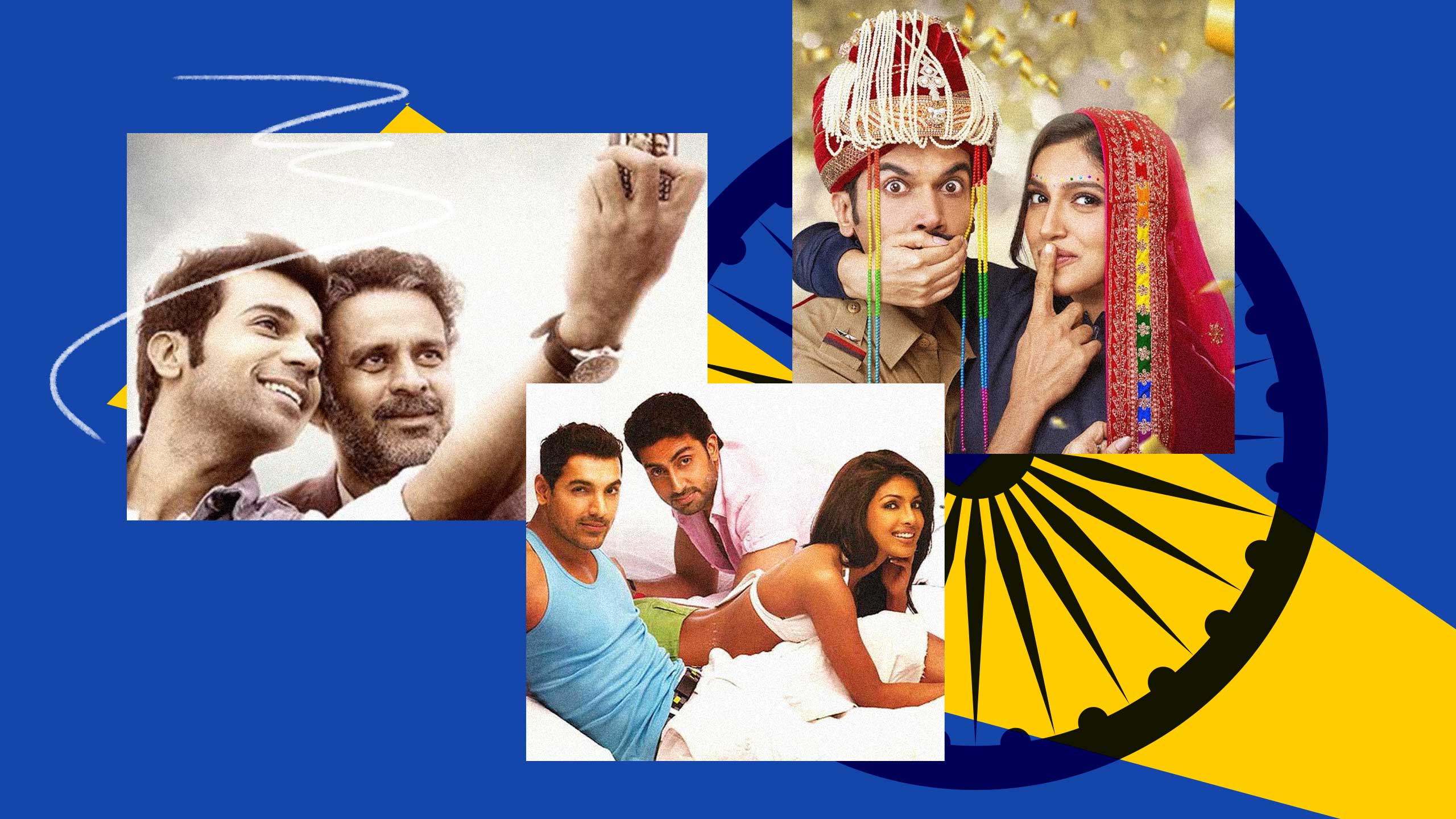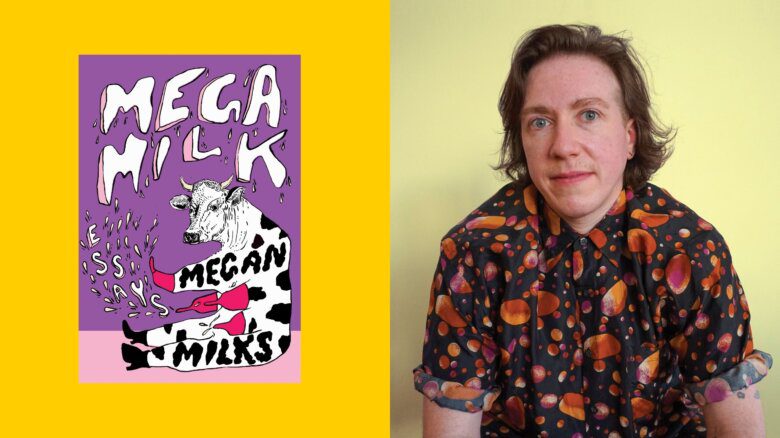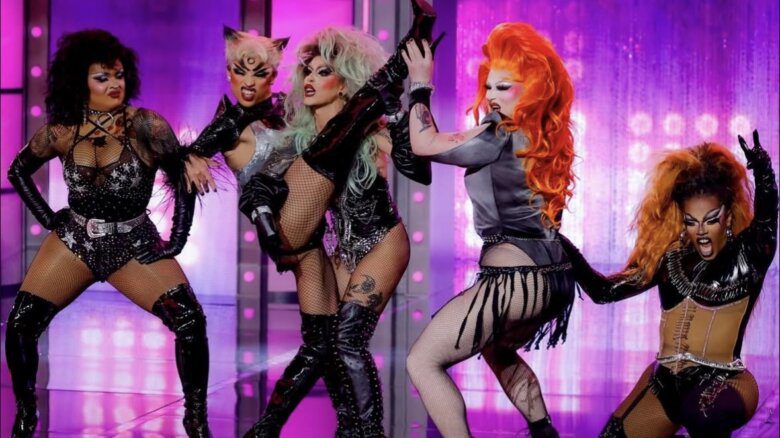The first time I saw two people of the same sex kiss was in the 2008 Hindi film Dostana. While my prepubescent self did not understand what it meant, I remember feeling a sense of relief at seeing someone who reflected my desires, followed by confusion when it all turned out to be a big sham.
Dostana (which translates to “friendship” in English) is about two Indian men, Sam and Kunal, living in Miami who pretend to be gay to move in with a single woman, Naina (played by Priyanka Chopra). Both fall in love with her and try to sabotage her relationship with another man. The romantic comedy is steeped in stereotypes as multiple characters act out in ways considered gay—limp wrists and all—and the climactic smooch between Sam and Kunal is ultimately about the men trying to prove their devotion to Naina. It is similar to other such gags of cross-dressing male leads that have appeared in Hindi films for a long time, alongside that of villainous queer characters like the serial killers in Sangharsh (1999) and Murder 2 (2011).
In the past few decades, independent or alternative films like Deepa Mehta’s Fire (1996), Onir’s My Brother Nikhil (2005) and I Am (2010) and Shonali Bose’s Margarita with a Straw (2014) have tried to paint a picture of queer sexuality and identity in India. But even in 2022, the commercial cinema continues to caricature queerness via comical or villainous stereotypes, or limit it to a point of derision and conflict in wider narratives.
Many of these films were made at a time when there was no legal recognition of the rights of gender-diverse and sexual minority communities in India, and a colonial-era law still criminalized same-sex relations as “carnal intercourse against the order of nature.” But even post-decriminalization, worrying tropes persist.
Bollywood has yet to overcome its propensity for queer narratives that either confirm preconceived notions and biases, like gender-stereotypical traits and relationships, or assimilate queerness within cisheteronormative norms of endogamous marriages and related rituals. Yet some independent and upcoming filmmakers are working to create more nuanced characters and go beyond such limiting narratives.
Queer Hindi Cinema in the age of legalization
Same-sex relations in India were first decriminalized in 2009 by the Delhi High Court. The Supreme Court of India revoked this change in 2013 before finally decriminalizing it again in 2018, framing it as an aspect of “constitutional morality” and upholding individual rights of citizens.
Amid this back-and-forth, Ramchandra Siras, a professor at Aligarh Muslim University in Uttar Pradesh, was suspended from his job in 2010 after a local TV channel secretly recorded him in bed with another man as part of a sting operation. The recording was sent to the university, which took disciplinary action and suspended him. Soon after winning his court case against the university and being reinstated later that year, Siras was found dead in his apartment in Aligarh. Although there were suspicions of foul play and arrests were made, the case was eventually closed. In 2015, screenwriter Apurva Asrani co-wrote the fictionalized drama film Aligarh about Siras’s story, which became a talking point in the media of the injustice meted out to the professor.
“Aligarh was an opportunity not only to vent out that anger [but also] to make a case for the LGBTQ community. Stop othering us, stop seeing us like we are creatures unlike you. We are human beings, we have beating hearts,” Asrani said in an interview with Xtra.
Although he was able to mine his own experiences as a gay man—like the difficulty in finding a rented accommodation as an unmarried man—he was worried about the reprisal from the audience.
“How much would it be accepted? Would there be opposition? Could there be violence like there was with Deepa Mehta’s Fire in 1996 when theatres were vandalized,” he said.
At the same time, he faced the internal challenge of how vulnerable he could get writing the film as he grew up in a society that ridiculed queer people. In the end, Asrani says he wanted “to create a healthy, respectable, sensitive reference point.”
The film doesn’t villainize anyone and didn’t ascribe to any labels either. In an oft-quoted dialogue from the film, Siras says, “How can anyone define my feelings in three letters?”
The film had a limited screening and mostly got positive reviews from the media, the LGBT community and allies. It resonated with the audience whose sympathy already lies with Siras, but it faced some resistance from the Aligarh administration, and some, including the city’s mayor, sought to ban screening of the film.
While Aligarh focused more on the loneliness of Siras and his developing friendship with a journalist and less so on his sexual life, another film in 2015 depicted the intersection of queerness with disability. Margarita with a Straw was inspired by writer and director Shonali Bose’s cousin, who has cerebral palsy.
For the film, Bose created the character of a college student with cerebral palsy, Laila, who explores her sexuality as she moves from New Delhi to New York. Away from her family and the environment in which she was brought up, she meets and falls in love with another woman, Khanum (who has a visual disability). Laila embraces both her disability and her bisexuality in public and private spheres, but she also tells lies and cheats on Khanum with a man.
The film tried to move away from typically good or bad queer characters; Laila is just like any human with flaws. Like Bose says “The key thing is that people don’t look at somebody with a disability as if they’re normal. And that was the attempt of the film—that you will identify with Laila as a young teenager who’s like any other teenager.”
Both films did well in the festival circuits and won accolades, but because they didn’t follow the commercial framework of big dance numbers, exotic locales and action/comedy sketches common in Bollywood mass entertainers, they had a limited audience. These two films were emblematic of a time that witnessed a rise in the public discourse around queer rights in the country at least in the urban areas.
The new era
Soon after 2018’s Supreme Court decision, queer filmmaking in India began to take off in earnest. Major Hindi films focused on individual rights and portrayed same-sex relationships as respectable and civil. But even though there have been more queer characters on screen, these more recent films don’t necessarily delve deeper into the lives of queer people—and they often still portray queer and trans people as objects of disgust to cis and straight people.
Ek Ladki Ko Dekha Toh Aisa Laga (How I Felt When I Saw That Girl) was released just six months after the court judgment. The story, written by screenwriter Gazal Dhaliwal, focused more on the coming-out experiences of protagonist Sweety than the nuances of her queer relationship.This film provided a new template with a shift toward expectations of cishet endogamous marriages, essentially creating a good and respectable queer person who does not transgress the rules and traditions of caste Hindu society.
That was followed by the 2020 film Shubh Mangal Zyada Saavdhan (Be Extra Wary of Marriage), where Kartik Singh (played by straight Bollywood star Ayushmann Khurrana) follows his partner Aman Tripathi to his hometown to attend his cousin’s wedding. Early in the film, Aman’s father finds them kissing on the train and immediately pukes and faints. Khurrana again stars in the 2021 film Chandigarh Kare Aashiqui (A Romance in Chandigarh), as a bodybuilder who says that he is going to puke after his romantic and sexual partner Maanvi tells him that she is a trans woman. This comes in the first half of the film, after he has asked her to marry him, and is followed by his transphobic attacks as he threatens her to leave the city.
In both films, the visceral disgust exhibited by characters turns into a sort of acceptance later on. In Shubh Mangal Zyada Saavdhan, the father begrudgingly lets the gay couple go their way, remarking that he may not understand their love but wants them to live the life they want. Meanwhile, Chandigarh Kare Aashiqui’s initial revulsion towards trans bodies evolves into curiosity, featuring various plot points to make Maanvi “acceptable” as a woman, at one point zooming in on an animated tutorial video of vaginoplasty. The two end up together, where Manu defends Maanvi to his family.
In Badhaai Do (Give Congratulations), released in February 2022, Shardul (a gay man) asks Sumi (a lesbian) to enter a marriage of convenience with him since they belong to the same caste and it would keep their families happy. The film explores their fictional marital life as they continue their real relationships with their respective same-sex partners. Even after their sham marriage is exposed, Shardul and Sumi decide to stay together to adopt a child, as Indian law does not allow adoption by queer couples (while single women can adopt kids, single men cannot adopt girls).
Badhaai Do is another example of this new generation of big-budget films which portray queer characters who are family-oriented and adherent to the strictures of caste and marital traditions. It is also vouching for civil rights, like the adoption of the community at the same time.
These films signify the progression towards narratives of rejection followed by acceptance of queer characters by the cishet family or partner, where their queerness is the central conflict. They reinforce this acceptance based on the goodness of these characters who uphold the sanctity of caste and family values, however problematic these values may be.
But despite progress in telling certain kinds of queer stories, all of these films still featured mostly cisgender and heterosexual actors and directors, and the fact that Badhaai Do’s trailer errantly featured a straight pride flag in a Pride parade scene further suggests that there is still a long way to go.
Improving queer narratives
Sameer Chopra is an assistant professor of English at Delhi University. He says that even if the films themselves aren’t perfect, mainstreaming queer stories is a good thing.
“We are in a stage where legal change came before the social change. Any goal in representation is to sensitize the larger community. If that is our goal, we definitely need positive representation,” says Chopra.
For him, neither the trope of assimilation of queer people within the norm as good and sanitized characters nor the one that depicts queer as an eternal “other” should become a yardstick for queer representation.
The recent crop of mainstream queer films, Chopra says, have not faced the resistance that, for example, Deepa Mehta’s Fire did, which framed queer lives in the context of a larger critique of Hindu nationalism. The 1998 film featured intimacy between two sisters-in-law eschewing the patriarchy of a Hindu household. Screenings were stopped in many places in the country, while cinema halls were vandalized due to homophobic backlash.
“It seems that we are ready to embrace LGBT issues as this kind of argument about individual rights. But if we want to politicize that representation a lot, then it becomes a problem,” Chopra says. He adds that such positive representation does not evoke controversy anymore, whereas an intersectional or political representation may invite backlash.
Outside of big-budget Bollywood, there are encouraging signs of varied and subversive queer characters that may guide future films.
Trans filmmaker Pradipta Ray’s new short film, Muhafiz, will screen at the BFI Flare: London LGBTQIA+ Film Festival later this month. It features a trans person and a Muslim man, and it is set during the communal tension and riots in Gujarat in 2002. She says she faced challenges financing the film because the industry isn’t built to support films like hers.
“Unfortunately, in India, we don’t have an ecosystem to promote or support independent experiments. LGBTQI becomes a more specific area,” says Ray.
An example of a nuanced queer portrayal is in Geeli Puchhi (Wet Kiss), a short film in the 2021 Netflix anthology Ajeeb Daastaans (Strange Stories) that features a queer narrative complicated by the violence of caste and desire. Its protagonist Bharati Mandal is a factory worker who aspires to a desk job but loses that position to Priya Sharma, who got the job owing to her dominant caste position and networks. Bharati lies to Priya about her caste identity to safeguard herself and the two develop an intimate bond. But when she reveals to Priya that she is a Dalit—those excluded from and previously considered untouchable in the Hindu caste hierarchy—and not from a dominant caste like Priya, she is spurned, illustrating how not only queerness but caste also determines desire.
This intersection of caste and queerness creates a complex story and breaks away from both the happy-go-lucky and the misery/death tropes in the big-budget Bollywood films. It also moves away from the upper caste queer narratives which have dominated Bollywood.
In an interview with Film Companion, Geeli Puchhi’s director Neeraj Ghaywan said that he had both queer and Dalit people guiding him in this portrayal to replicate that lived experience.
“I also brought in a lot of people from the communities, because you cannot replicate a lived experience,” he said.
I hope thata Bollywood moves towards sharing stories made with active collaboration with the community, engaging with the diversity of queer experiences and how they are not isolated from the systemic issues of caste, class, religion, disability and geographical and social locations.
Dostana may have brought the queer vocabulary to the forefront in Hindi films for people like me, and mass entertainers may be normalizing queer narratives in a post-decriminalization world. But Bollywood must think beyond banal portrayals that create new stereotypes and expectations that suit the dominant community.
I want to see more trans and non-binary characters who cannot be confined into neat little boxes. I hope to see more of Bharati and other characters who expand the imagination of who or what queer is.


 Why you can trust Xtra
Why you can trust Xtra


